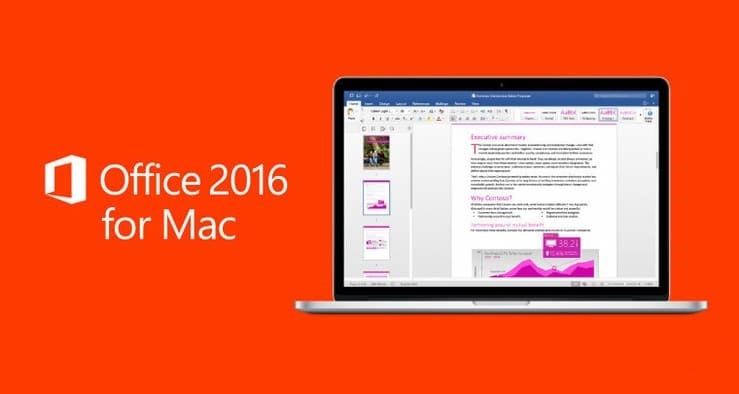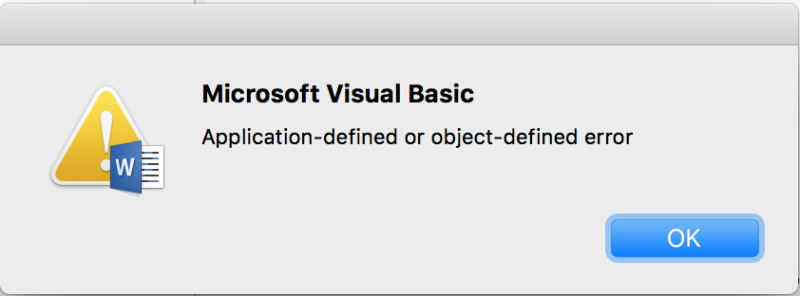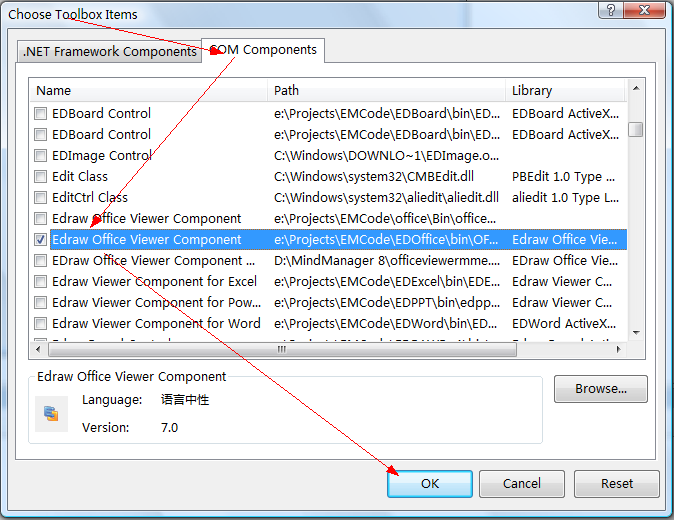

- VISUAL BASIC FOR APPLICATIONS WORD MAC HOW TO
- VISUAL BASIC FOR APPLICATIONS WORD MAC MANUAL
- VISUAL BASIC FOR APPLICATIONS WORD MAC FULL
- VISUAL BASIC FOR APPLICATIONS WORD MAC SOFTWARE
- VISUAL BASIC FOR APPLICATIONS WORD MAC CODE
Initially a marketing term for an office suite (bundled set of productivity applications), the first version of Office contained Microsoft Word, Microsoft Excel, and Microsoft PowerPoint. It was first announced by Bill Gates on August 1, 1988, at COMDEX in Las Vegas. Microsoft Office, or simply Office, is a family of client software, server software, and services developed by Microsoft.
VISUAL BASIC FOR APPLICATIONS WORD MAC SOFTWARE
Proprietary commercial software ( retail, volume licensing, SaaS) Proofing only (11): Hausa, Igbo, isiXhosa, isiZulu, Kinyarwanda, Pashto, Romansh, Sesotho sa Leboa, Setswana, Wolof, YorubaĮnglish, Arabic, Chinese (Simplified), Chinese (Traditional), Danish, Dutch, Finnish, French, German, Italian, Japanese, Norwegian (Bokmål), Polish, Portuguese (Brazil), Russian, Spanish, Swedish.Partial (48): Afrikaans, Albanian, Amharic, Armenian, Assamese, Azerbaijani (Latin), Bangla (Bangladesh), Bangla (Bengali India), Belarusian, Bosnian (Latin), Dari, Filipino, Georgian, Gujarati, Icelandic, Irish, Kannada, Khmer, Kiswahili, Konkani, Kyrgyz, Luxembourgish, Macedonian, Malayalam, Maltese, Maori, Marathi, Mongolian (Cyrillic), Nepali, Norwegian Nynorsk, Odia, Persian (Farsi), Punjabi (Gurmukhi), Quechua, Scottish Gaelic, Serbian (Cyrillic, Bosnia & Herzegovina), Serbian (Cyrillic, Serbia), Sindhi (Arabic), Sinhala, Tamil, Tatar (Cyrillic), Telugu, Turkmen (Latin), Urdu, Uyghur, Uzbek (Latin), Valencian, Welsh,.
VISUAL BASIC FOR APPLICATIONS WORD MAC FULL

In the Drive window, I select L \\headoffice\share (this is my default setting)
VISUAL BASIC FOR APPLICATIONS WORD MAC MANUAL
The manual method is as follows, using the correct drive text –Īn input window opens and selections made
VISUAL BASIC FOR APPLICATIONS WORD MAC CODE
I then quit the code and do it manually, all works OK. When I reach the second line I receive an error message – I was not using the correct drive text in this example. WshNetwork.MapNetworkDrive "L:", "\\mydrive\share" Set WshNetwork = CreateObject("WScript.Network") Thank you both for the information provided. When you have done with the object you have created you should explicitly destroy it: So, for example, the Method you actually want to use, MapNetworkDrive cannot be performed by the Application which is why you have to create a specialised object to do it. In the general case, of course, you must ask an appropriate object to do the action you want.
VISUAL BASIC FOR APPLICATIONS WORD MAC HOW TO
This works in this case because the Application does know how to do it - creating a new object is a fairly generic type action that most objects can perform. This is what PH's code does - by not explicitly specifying an object, he is requesting the default object, the Application (Word or Excel or whatever you're using) perform the action.

If WScript is just something you've copied from somewhere else and unrelated to the rest of your code then you need, instead, to ask some other object, to which you do have a reference, to create the new object for you. If you think WScript should be referencing an object then you need to look at the rest of your code to find out why it doesn't. In your code you are asking that some object, referenced by WScript, perform this action for you, and you are being told that WScript is not an object. This doesn't just happen, it is an action (or a "Method") that is performed by another, existing, object. You are asking for an object of type "WScript.Network" to be created. PHV is correct but, perhaps, some explanation.


 0 kommentar(er)
0 kommentar(er)
